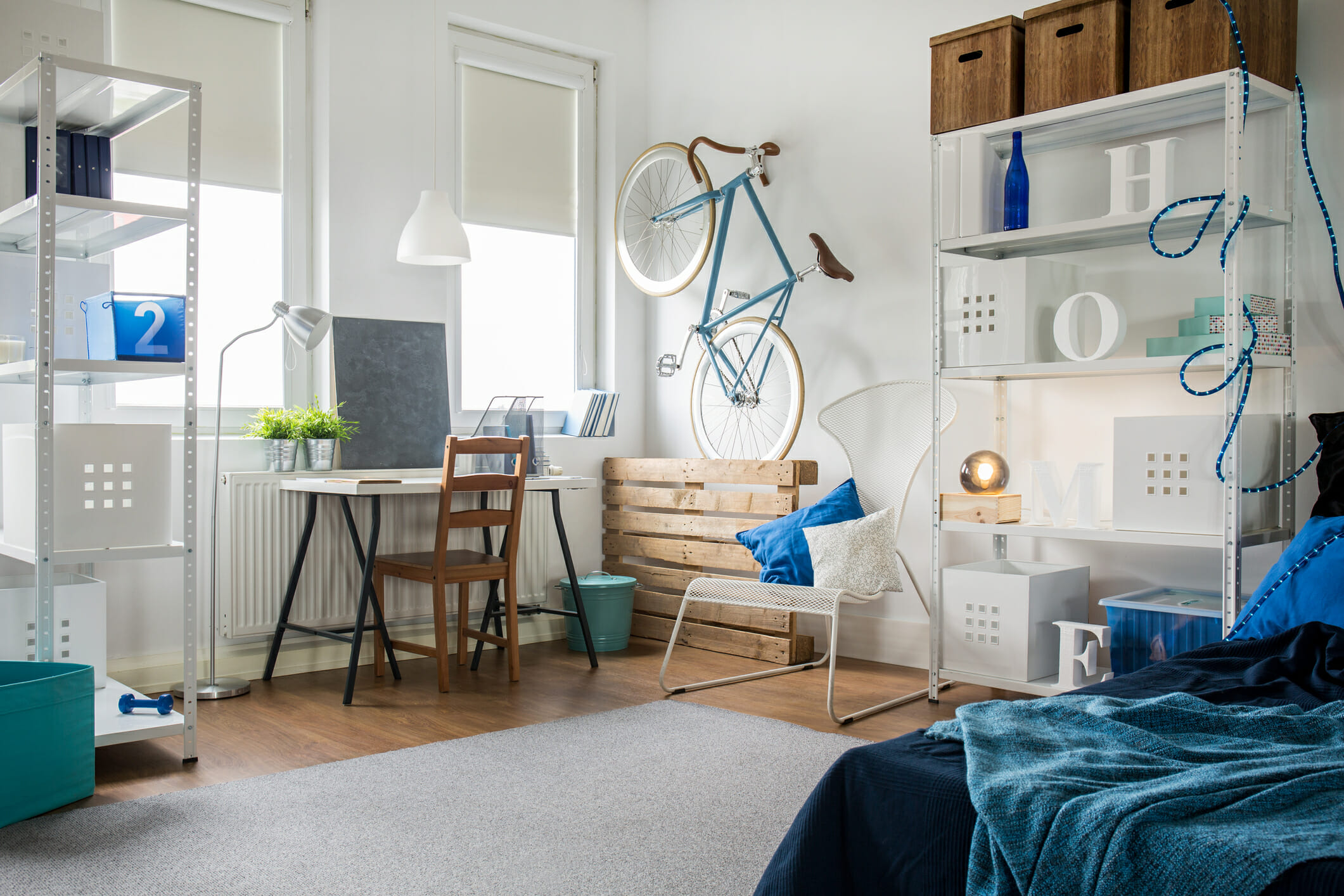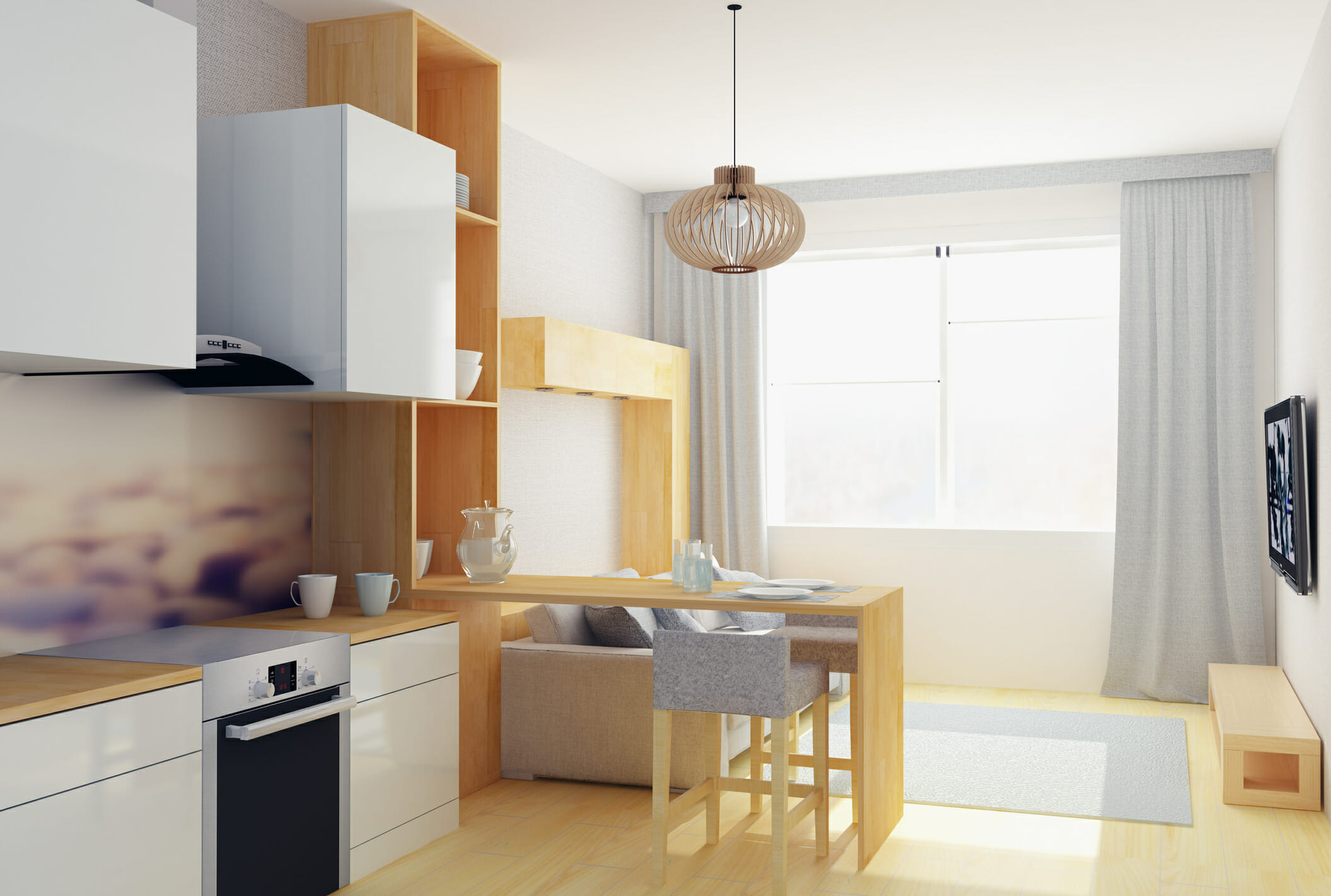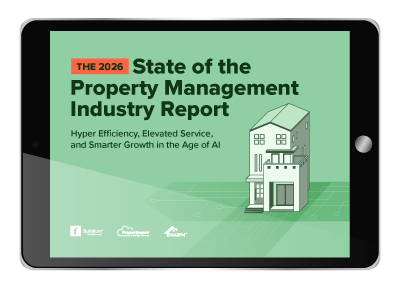Note: This post is Part II of our series on micro-apartments. For a full overview of the topic, we recommend starting with Part I: Are Micro-Apartments the Next Big Thing?
The Economics of Micro-Apartments
A lack of entry-level housing is forcing people to rent for longer periods of time, and a more diverse demographic is renting now than ever before. People of all ages and income levels need apartments—singles, couples, and families alike.
However, just 6% of apartments built in 2012 and 2013 were studios—and when singles are unable to find studios, they’re either forced to move into more expensive one-bedrooms, taking away units that couples need; or to find roommates to split the rent on multifamily units, displacing families who can’t afford to buy homes. In New York City, for example, 1 in 3 units in the city are occupied by a single person, but only 7% of apartments are studios. There are 1.8 million 1- to 2-person households, but only 1 million studios and 1-bedroom units.
The supply of apartments in top locations can’t keep up with the demand, relentlessly driving up rent costs year after year. Micro-apartments are poised to address issues of affordability and availability by increasing the density of residents that can inhabit buildings without increasing their footprint. This enables more people to live in convenient neighborhoods, simultaneously cutting down on the use of transportation that results from urban sprawl.
With an increasing supply of apartments—particularly units of below-average size—rent prices should go down, allowing residents of all income brackets to move in. However, this is the opposite of what’s happened. Let’s look at an example to learn more.
Case in Point: Micro-Apartments in New York City
Everyone knows that in New York City, you pay far too much to share a too-small space with too many roommates. In the city’s metro area, nearly 1 in 2 renters making $45,000-75,000 a year are spending more than 30% of their income on housing—in addition to 3 in 4 renters who make $30,000-45,000 a year.
1 in 2 NYC renters earning $45-75k spend >30% of income on housing. Learn more on the #BuildiumBlog! Share on X
Rent control was first introduced during World War II to combat that era’s housing shortage. Today, about half of the city’s population still lives in rent-stabilized units. For renters, the benefits are that landlords can’t charge more than a certain amount or raise the rent on a one-year lease. In addition, renters always have the right to renew their lease.
However, this creates a massive issue: Setting prices for half of the city’s units means that the other units’ prices are driven higher. Developers construct luxury units to bring in more revenue. Meanwhile, because the rent-stabilized units are such a good deal, tenants stay in them for as long as possible—leaving little affordable housing for a huge portion of the city’s residents. In addition, 75% of New York’s apartments were constructed before 1932—and since the renters can’t be asked to leave, the buildings can’t be torn down to make room for higher-occupancy residences.
To address the dire need for single-person units, New York City’s minimum dwelling size—400 square feet—has been waived for certain buildings (like Carmel Place), which essentially serve as pilot programs for the city. However, the history behind minimum size requirements is a critical part of the dialogue around micro-apartments in NYC, so let’s discuss why these laws were originally put in place.

The History of Small Apartments
In the 1800s, as many as 1 in 2 city dwellers lived as a boarder in a family’s residence or hosted one in their own home. Boarding houses and residential hotels were common into the 20th century; they offered meal plans and cheap rooms, whether private or in communal “flophouses.” These residences hit their peak among single working women between 1880 and 1930—and in Manhattan, 10 still exist today. In the boarding houses of 2017, working women can get a private room in Manhattan for an unheard-of $1200/month, which includes housekeeping and 2 meals a day.
Boarding houses diminished in popularity for many reasons—for one, it became acceptable for women to rent their own apartments in the 1960s. In addition, however, a number of laws were passed in major cities that put the nail in the coffin for this type of living arrangement. In New York City, for example, it was made illegal for tenants to be forced to share amenities in 1929; and 60 years later, apartments smaller than 400 square feet were outlawed altogether.
Throughout the decades, building codes were enacted that prevented the construction of buildings with exclusively small units, or blocked the creation of small units altogether. Many of these laws were obviously vital for eliminating the squalid living conditions that abounded in the tenements of the late 19th century. However, The L.A. Times proposes:
“These regulations led to larger apartments—and, inevitably, fewer apartments at higher rents. […] In hindsight, these policies seemed intended to create economic segregation—raising the financial bar for living in an area by removing the most affordable options.”
On the other hand, Remapping Debate argues:
“The idea that studios—not exactly palaces to begin with—should become smaller in order to adapt to a market signal is difficult to swallow. It requires a willingness to do away with standards that […] go on to determine people’s living conditions for decades or centuries. […] A similar debate surrounded the tenement laws at the turn of the 19th century, with the central argument against the reforms being that an unrestrained market would resolve the housing problems of the slums. By choosing standards over markets, New York laid the ground for continued reform and improvement.”

The Affordable Housing Shortage
Case in Point: Micro-Apartments in Boston
Residents of Boston and its suburbs saw their average weekly earnings and unemployment rate rebounding from the recession at an even faster rate than the rest of the country. However, the area’s cost of living has risen faster still. Between 2000 and 2010, the number of renters spending over 30% of their income on rent jumped from 39% to over 50%, while those spending over 50% of their salaries on rent rose from 18% to over 25%. As of 2014, rent prices were increasing 5 times faster than Boston residents’ salaries; and in 2015, average rents hit an all-time high of $1857/month.
Why are Boston's rent prices increasing 5x faster than salaries? Find out on the #BuildiumBlog! Share on X
Between 2010 and 2015, Boston’s population grew by 8%, packing 14,000 people per square mile into a city just 48 square miles in size—the second-smallest in the country. This growth will continue at a steady clip over the coming decades, leading Mayor Marty Walsh to call for the addition of 53,000 more housing units by 2030.
This isn’t the first time that the Boston metro area has struggled with insufficient housing in the face of population growth. Between 1880 and 1920, the city’s population doubled—both due to its annexation of surrounding towns, and the influx of immigrants from Europe. To accommodate these residents, “triple-deckers” were built throughout Boston, Cambridge, Watertown, and Somerville. Today, 1 in every 2 or 3 units in these municipalities is in these multifamily homes.
Millennials are flocking to Boston and other coastal cities for college, careers, and culture; and at the same time, their Boomer parents are retiring and downsizing. Consequently, there’s a vast undersupply of affordable apartments—a trend that will only get worse over the coming years. In the struggle to find a place to live, students and young professionals have moved into the city’s triple-deckers, making these units affordable by splitting the rent with a handful of roommates. However, this has pushed low- and middle-income families out of Greater Boston and deep into the suburbs in search of affordable housing, with longer and longer commutes.
As a city, Boston has some of the largest average apartment sizes in the country. Larger units are vital for families, but the average young professional just needs a unit that they can afford. 4 in 10 households in Boston consist of just 1 person—but only 6.1% of units in the city are studios. It’s clear that we need many more small units to support the huge influx of students and single professionals into the city, opening up larger units to families.
6% of Boston apts are studios, but 4 in 10 residents live alone. Find out more on the #BuildiumBlog! Share on X
Micro-apartments in Boston should have been the answer to the city’s housing issues. They garnered a great deal of attention, but disappointingly, they never caught on in a big way. As of fall 2016, only several hundred had been built, including Factory 63, 100 Pier 4, and 315 on A.
In Boston, the smallest legal size for a studio is 450 square feet—and even then, units that small are only permitted if the building is within 1 mile of public transit. The intention was to create affordable neighborhoods filled with young professionals who could easily commute to work throughout the city. However, Boston’s micro-apartments are being built almost entirely within the Seaport, a costly up-and-coming neighborhood filled with new construction; the rest of the city’s zoning requirements are too strict.
Rather than providing twenty-somethings with an economical living option, all of the micro-apartments that were built are luxury units that cost more than conventional studios—and in many cases, more than one-bedrooms. They’re too small to be split among multiple people, but the rent is too high for most single renters to afford.

The Case for Micro-Apartments
It’s the scarcity of micro-apartments that’s driving up prices. The simplest way to fix this quandary is to ease the restrictions preventing them from proliferating across our cities. Loosening minimum size requirements will invariably cause concern. However, which is worse: Packing more people into smaller units downtown; or forcing young professionals and working families to move far away from their workplaces, spend less time at home due to long commutes, and pay hundreds of dollars in transportation costs each month?
Are small apartments the problem, or are sub-standard conditions what we truly fear? One article explains:
“Much of the literature on how humans adapt to tight quarters comes from studies looking at crowding, housing instability, and other factors that are more likely to affect a family squeezed into a low-income unit than an individual housed in a sleek-but-small space. What individuals and families need out of housing—access to privacy, security, a quiet space for sleeping, a pleasing design—can be accomplished with limited space. But if we’re talking about housing for the poor and a luxury micro-unit with the same descriptor—“tiny”—scientists say we may be missing the point.”
Micro-apartments can’t—and shouldn’t be—a solution for everyone. Most are intended for a very specific kind of renter: Single twenty-somethings who work downtown and are willing to trade space for convenience. After a year or two, they graduate to larger units, and new renters take their place. In cities like Boston and New York, renting cramped spaces at inflated prices is seen as an inevitable rite of passage; but what we fail to consider is that young renters aren’t the only ones hurt by this arrangement. They have to live somewhere—and when they’re forced to team up with roommates to rent out multifamily homes, it’s working families who are displaced.
Eric Bunge, a founder of nArchitects, the firm that designed Carmel Place, explains:
“[Micro-apartments are] one small tool in what needs to be a larger toolbox for addressing the rather homogeneous housing stock that we have inherited from the big building booms when nuclear families prevailed. […] Young people, old people, middle-aged people—they all need small units. And it’s not correlated to any income level. Poor people need it, rich people want it.”
By fighting to keep units larger than they need to be under the assumption that smaller spaces are inherently worse for renters, who are we really helping? Restrictions need to be updated to allow the construction of high-quality, high-efficiency micro-apartments—and the more that are built, the more affordable they become. Architect David Baker explains, “You have to let people vote with [their] wallets. If it doesn’t rent, people won’t build them. If you have more competition, they’ll be better and rent for less.” Micro-apartments are the best tool that we have to solve the affordable housing crisis in America’s most innovative cities. It’s time that we gave them a fair chance.
Could micro-apartments solve the affordable housing crisis? Find out on the #BuildiumBlog! Share on X

If you liked this post, be sure to read Part I of our micro-apartment series: Are Micro-Apartments the Next Big Thing?
In addition, we bet you’ll enjoy our piece on the tiny house movement—another burgeoning housing trend with a small footprint but a big impact.
Read more on Industry Research

